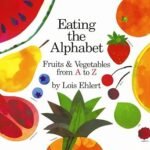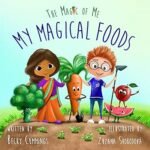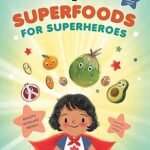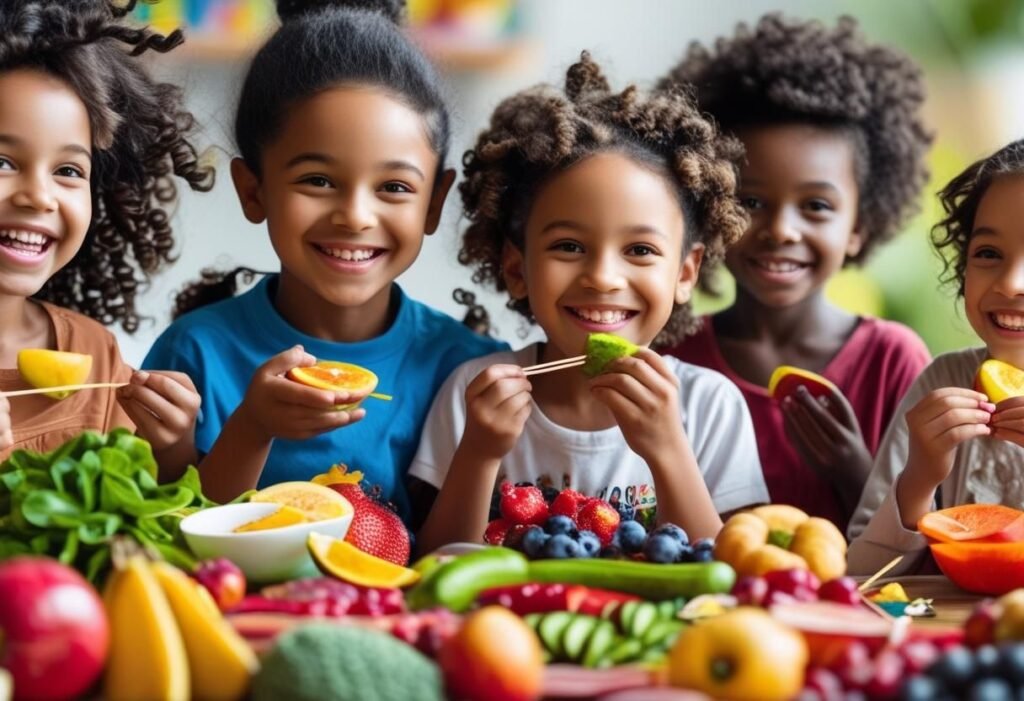Healthy Eating for Kids Starts with Colourful, Playful Food
Healthy eating for kids doesn’t have to be a battle. With a mix of creativity and science-backed strategies, you can make nutritious meals something your child actually looks forward to.
1. Make Food Colourful and Playful
Kids eat with their eyes first. Studies show that children are more likely to try foods that are visually appealing, especially when bright colours and fun shapes are involved. Creating food art—like a fruit rainbow or veggie monster—activates curiosity and lowers resistance to new foods.
🧠 Brain science: Novelty and visual stimulation trigger dopamine release in the brain, which can make trying new foods feel rewarding instead of stressful.
2. Let Them Get Involved
Research from the Journal of Nutrition Education and Behaviour shows that when kids help prepare their own meals, they eat significantly more vegetables and develop better long-term eating habits. Involvement builds ownership.
🧠 Why it works: Kids develop a sense of autonomy and control. This reduces resistance and helps them feel more confident around food.
3. Create DIY Snack Stations
Having healthy options within reach encourages better choices. A 2020 study found that pre-prepped, visible healthy snacks increased healthy snack consumption in children by 50%.
🧠 Environment matters: Kids follow what’s easy and available. Creating a positive food environment leads to better default choices.
4. Name It Something Fun
A Cornell University study found that giving healthy foods fun names like “X-ray Vision Carrots” or “Superhero Soup”—led to a 35% increase in kids choosing those items in the cafeteria.
🧠 Framing effect: The name we give a food changes how we perceive it. Kids respond positively to playful, imaginative language.
5. Use Dips and Sauces Wisely
Adding dips makes healthy food more palatable. Research shows that pairing vegetables with a flavour kids already like (like hummus or yogurt-based dips) increases acceptance by reducing bitterness or unfamiliar textures.
🧠 Taste conditioning: Positive associations with a favourite dip can help override initial dislike of a new vegetable.
6. Don’t Ban Treats—Balance Them
Strict food rules can backfire. Studies show that restricting foods can increase a child’s desire for them and may lead to overeating when the food becomes available. Instead, teach moderation and build trust.
🧠 Restriction rebound: When something is forbidden, it becomes more attractive. Balanced messaging helps kids develop self-regulation.
7. Lead by Example
Modelling is powerful. A meta-analysis of 28 studies found that children are more likely to try and enjoy healthy foods if they see their parents eating them regularly without pressure.
🧠 Mirror neurons: Kids learn by watching. What you eat, how you talk about food, and your own habits shape theirs.
8. Make Mealtimes Positive
A positive mealtime atmosphere free from pressure or power struggles has been linked to better dietary habits, fewer weight concerns and improved mental health in kids. Encouragement works better than bribes or threats.
🧠 Emotional context: Stress at meals can activate the brain’s “fight or flight” response, making kids shut down or resist. Calm tones and positive reinforcement help them stay open and curious.
Recommended Books to Support Healthy Eating at Home
Healthy Eating for Kids: Making Nutrition Fun
Looking for more support? These top-rated books are popular with parents for making nutrition simple, fun, and interactive for kids:
 Eating the Alphabet by Lois Ehlert
Eating the Alphabet by Lois Ehlert
A colourful board book that introduces fruits and vegetables from A to Z—great for toddlers and preschoolers.
 Good Enough to Eat: A Kid’s Guide to Food and Nutrition by Lizzy Rockwell
Good Enough to Eat: A Kid’s Guide to Food and Nutrition by Lizzy Rockwell
Simple science and fun illustrations teach kids about the food groups and how nutrients help their bodies.
 My Magical Foods by Becky Cummings
My Magical Foods by Becky Cummings
Perfect for picky eaters—this playful storybook helps children see fruits and vegetables as fun and powerful.
 Get Your Dragon to Eat Healthy Food by Steve Herman
Get Your Dragon to Eat Healthy Food by Steve Herman
A humorous story that teaches healthy eating through the antics of a junk food–loving dragon.
 101 Healthiest Foods for Kids by Sally Kuzemchak
101 Healthiest Foods for Kids by Sally Kuzemchak
A parent’s go-to guide for nutritious food choices, easy meal ideas, and answering common food questions.
 Superfood for Superheroes
Superfood for Superheroes
A story-based recipe book where each food gets its own superpower, perfect for kids aged 4–10.
Find it here
 Real Kids Real Food
Real Kids Real Food
A hands-on cookbook filled with recipes tested and approved by children themselves.
Find it here
Final Thoughts
Healthy eating for kids starts early, and it sticks best when it’s linked to curiosity, confidence, and calm—not control. Build a routine that makes nutritious choices feel easy and enjoyable, and your child will be more likely to stick with them for life.
👉For more practical posts on nutrition, health, and patient behaviour, explore the full Meducate blog.
Affiliate Disclosure:
Some of the links in this post are affiliate links. This means if you click through and make a purchase, we may earn a small commission at no extra cost to you. We only recommend products we genuinely find helpful for healthy eating for kids.

